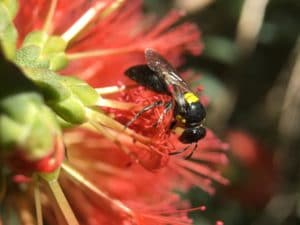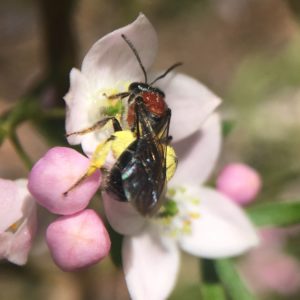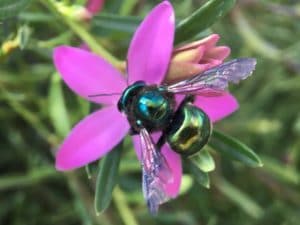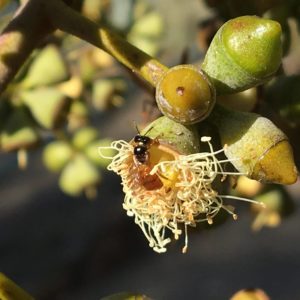 If you would like to participate in this group or make a suggestion, contact me at peterabbott@iinet.net.au or on 0421 227 315.
If you would like to participate in this group or make a suggestion, contact me at peterabbott@iinet.net.au or on 0421 227 315.
Peter Abbott
Native Bee SIG Coordinator
New book on native bees
Native bees of the ACT and NSW South Coast – A spotter’s guide by Peter Abbott
For further details and availability, see http://www.nativebeesACT.net
New Facebook group
Native bees: ACT & South Coast
A place to celebrate the diversity, role, and beauty of the native bees in the ACT and South Coast region. Share your stories, pictures, and information to expand our knowledge and appreciation of the native bees in our local area.
Check it out at: https://www.facebook.com/groups/585007439318188
Upcoming events
Native Bee Spotting in ANBG
Interested in seeing some native bees? We have a number of native bee spotting sessions in the Gardens in the spring/summer. Learn to recognize native bees, learn where to look, and begin to learn identification tricks.
We meet the Visitors Centre and head around the Gardens for an hour or two. Native bee spotting is very weather dependent – they like warm, sunny, non-windy days (don’t we all?), so the date for a spotting walk may only have a few days notice.
You can either keep you eyes on this website or I can put you on my email list for those interested in native bees – see contact details above.
Native bee spotting dates:
None currently
Native bees in the ACT
Australia has at least 1600 species of native bees – they come in a wide variety of colours and range in size from 3 to 25mm. Native bees play a vitally important role in the pollination of native plants but are also significant pollinators of exotic plants and agricultural crops.
In recent years, interest in native bees, both the social stingless bees, which can be kept in artificial hives, and solitary bees has grown significantly – helped by some excellent recent publications. While the ACT is too cold for the stingless bees, we have a wide variety of native solitary bees nesting in the ground, in wooden cavities or in hollow stems. The exact number of native solitary bee species in the ACT is not known, but likely be around 150-200.


Spotting and identifying native bees
Spotting native bees can be challenging. Many are small and our attention is drawn to the generally more numerous honey bees. A little more patience is required to stop and look closely at flowering plants, particularly native plants. You will often be surprised by the variety of colourful native bees that can be found in your garden and in parkland. The Australian National Botanical Gardens is a particularly rich source of native bees.
Identifying native bees to the species level can be difficult, but several recent publications can help get us to the genus level and beyond – an exciting challenge. See the publication list below.
Native bees can be encouraged to visit our gardens by providing good nectar-bearing flowering plants and appropriate nesting environments, some of which can be man-made.


Activities of the Native Bee SIG
- Photographing and identifying native bees in the ACT.
- Adding the information to the Canberra Nature Map or iNaturalist Australia website which will be transferred to the Atlas of Living Australia website.
- Making native bee homes for gardens, the Jerrabomberra apiary or other locations.
- Giving presentations and demonstrations on native bees to interested groups to increase public awareness of native bees.
- Encouraging use of appropriate garden and park vegetation to support native bee populations.
Native bee publications
- Australian Native Bees – A Practical Handbook An Ag Guide by NSW Dept of Primary Industries (2016) – an excellent introduction to native bees.
- The Australian Native Bee Book by Tim Heard (2016) – everything you need to know about keeping stingless bees.
- A Guide to Native Bees of Australia by Terry Houston (2018) – a comprehensive analysis and identification guide.
- The Australia Bee Genera by Tobias Smith University of New England (2018) – an annotated user-friendly key to identification.
- Bees of Australia by James Dorey (2018) – A photographic exploration.
